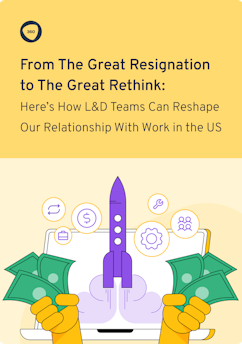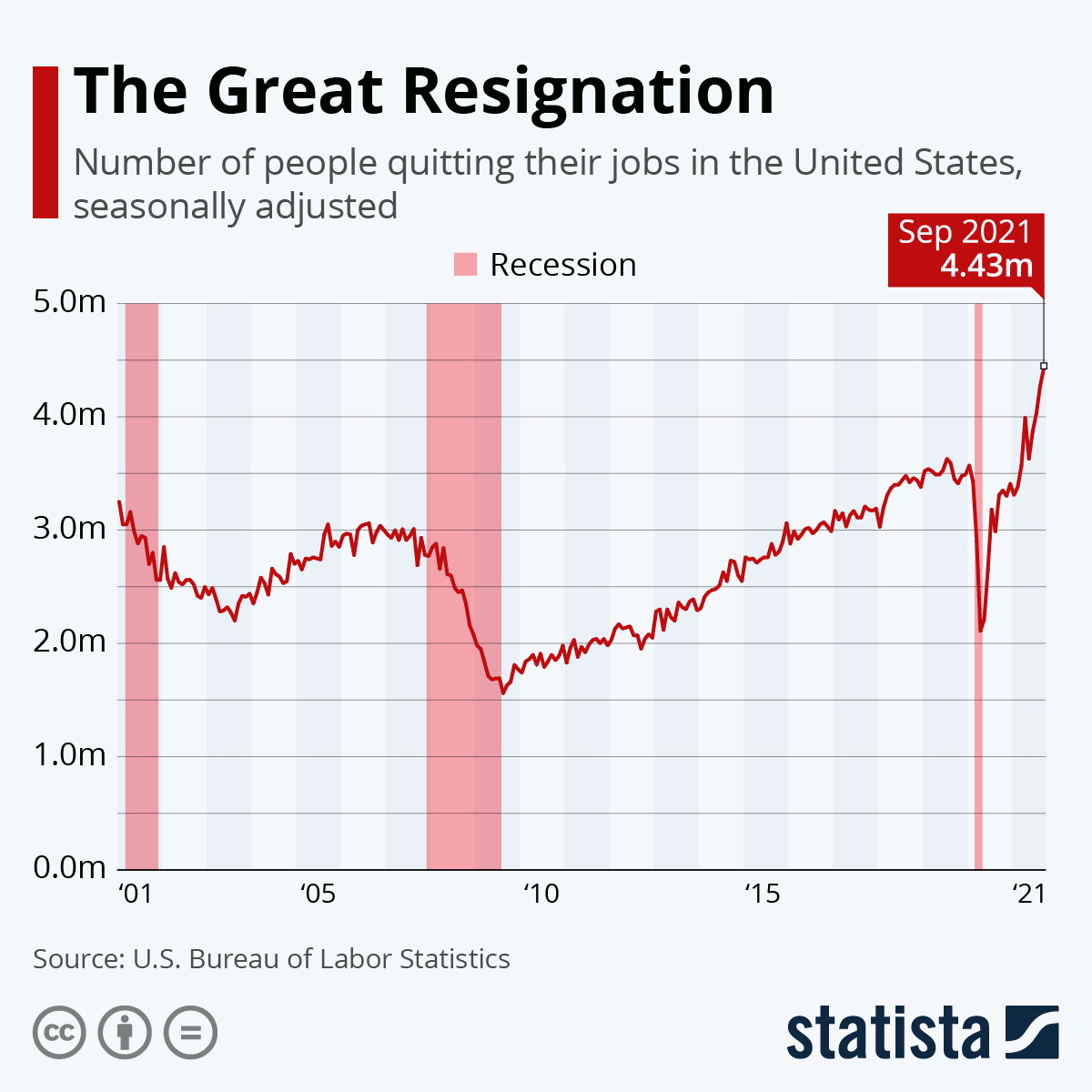US Great Resignation Study (2022)

“You have to run your company as if every employee has one foot out the door. It’s time to ramp up your Employee Experience program, focus managers on listening and supporting people, and seriously invest in career pathways and internal growth for your staff.”
By now, most of us are well aware of the tidal wave of resignations that hit the US (and the world) this past year. Anthony Klotz, an organizational psychologist at Texas A&M University, predicted this “Great Resignation”—and the US Bureau of Labor Statistics bore his theory out when they reported a record-breaking four million quits in April 2021.
And those numbers just kept going up:
We surveyed 1,058 American employees to understand if this ongoing Great Resignation is something bigger.
But we think there’s more to the story. So, we surveyed 1,058 American employees to understand if this ongoing Great Resignation is just a phenomenon about people quitting their jobs in a huff, fed up with demanding and sometimes even dangerous work—or something bigger.
We dug into urgent questions, such as: How does skill development and internal mobility affect quit rates? Is burnout affecting managers more than individual contributors? And how do employees really feel about remote vs. in-person work?
For each challenge we explore, we offer concrete advice for how L&D teams can tackle it, based on our countless interviews with L&D leaders, as well as our own clients’ experiences.
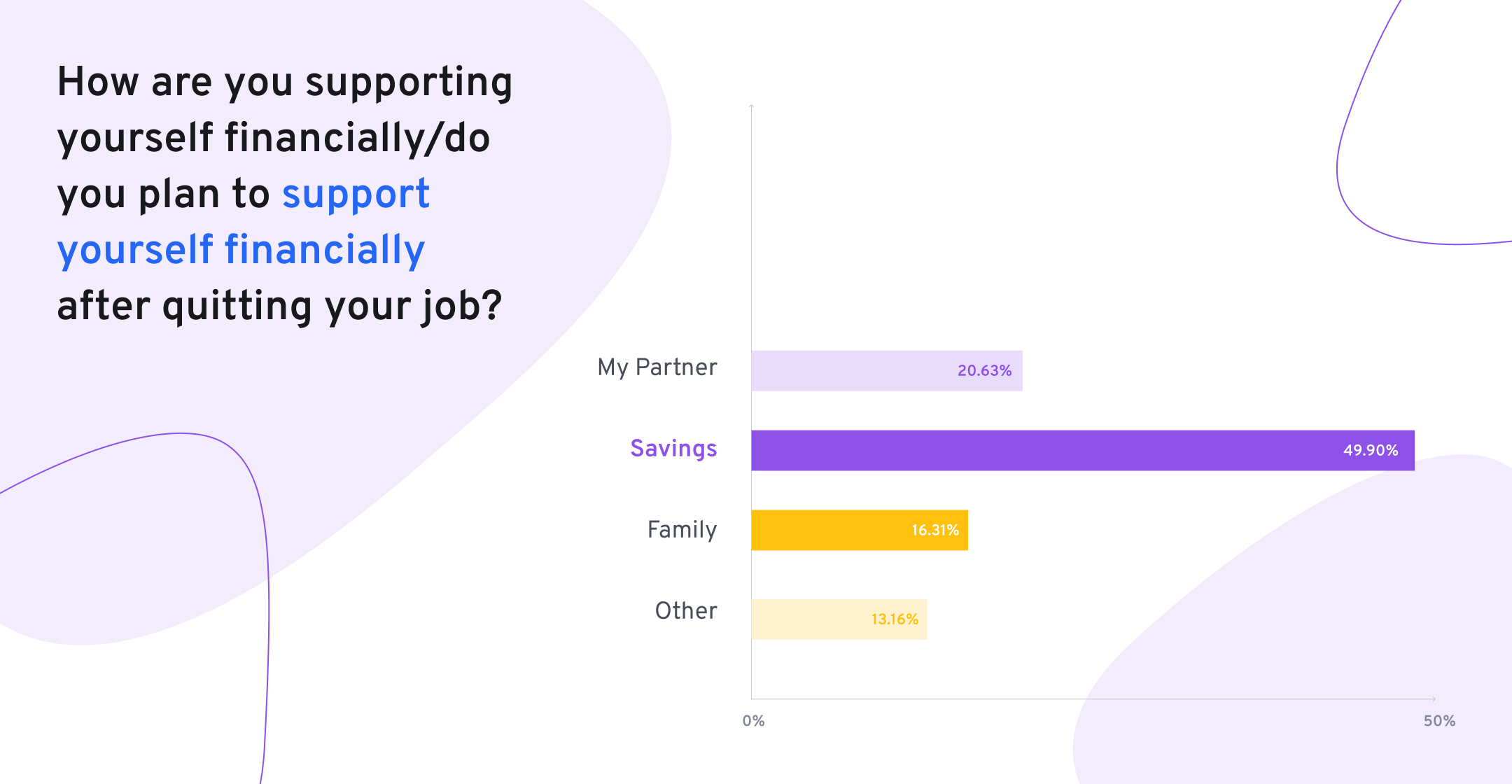
From “The Great Resignation” to “The Great Rethink”
Many pundits seem to agree that yes, the Great Resignation does point to something bigger. For a start, excepting baby boomers who are deciding to retire (perhaps earlier than they had planned), most people are quitting in search of a new job—they don’t plan on being unemployed forever. The flip side of the Great Resignation is the Great Rehiring (or Migration, or Reshuffle…).
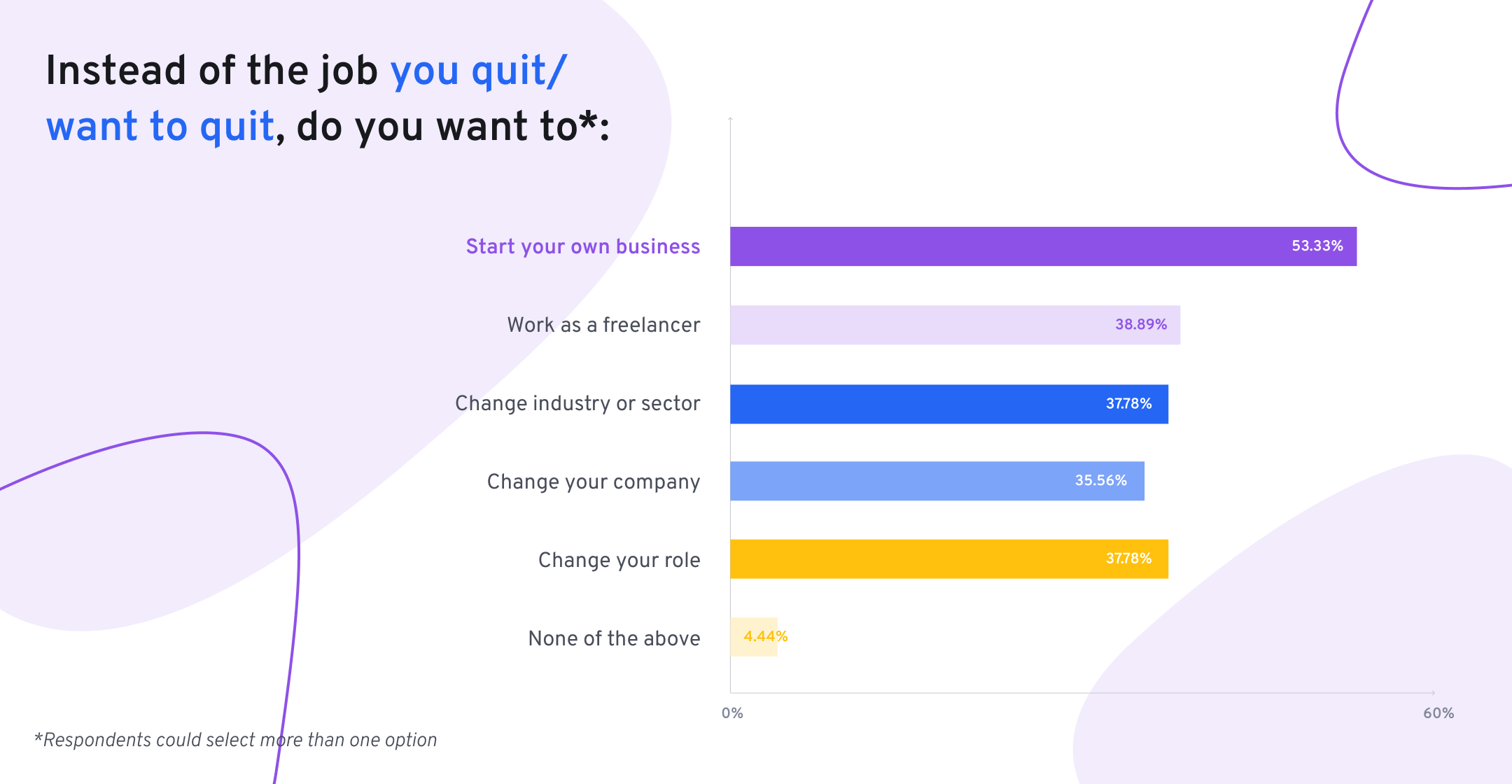
We also shouldn’t treat all employees as a monolith; for instance, data suggests it’s workers in traditionally low-paid (and in-person) industries like leisure and hospitality that are driving the high resignation numbers. In contrast, white-collar workers—even though they complain of burnout—don’t seem to be leaving at the same rate.
But perhaps the most interesting question to dig into is why—why are so many employees leaving jobs they no longer find suitable? Is it just a question of paychecks and pandemic worries, or are we undergoing a more fundamental shift in what we expect from our careers? As Anthony Klotz himself framed it, are more people looking, “to fit work into their lives, instead of having lives that squeeze into their work”? And, if so, what does all this mean for employers?
We think—as Anthony Klotz, Josh Bersin, and others do—that employees are fundamentally rethinking what they want their professional lives to look like. Now, it’s up to employers to make the next move; do they have the motivation and resources to turn their workplaces into the kind of environment post-pandemic employees want to be in? Or will they take the short-term approach of accepting sky-high churn rates and rely on recruiting (and poaching) aggressively?
We think—as Anthony Klotz, Josh Bersin, and others do—that employees are fundamentally rethinking what they want their professional lives to look like.
L&D: Employers’ most undervalued asset
When employee experience is proving to be a critical component of employee retention, Learning and Development teams are foundational. As the people supporting employees in their career aspirations, surmounting work-related challenges, and training them for their next big step, L&D leaders are at the very heart of employee experience.
As we’ll see in our series of blog articles dedicated to our survey results (you can find them on the menu bar to the left), much of employees’ satisfaction and dissatisfaction—whether they’re ‘quitters’ or not—stems from whether L&D programs were functioning to their fullest potential.
For instance, one of the biggest reasons for quitting (or wanting to), right after ‘low salary’ and burnout/workplace stress, was because respondents’ jobs didn’t feel meaningful. Yet less than half of those respondents asked about internal mobility—and only 50% are absolutely confident they have the skills to pursue the career they really want.
This begs the question: Are L&D leaders able to create environments where employees are able to declare their learning needs, in which they have clear paths to professional development, and where burnout and workplace stress don’t add to attrition rates?
Are L&D leaders able to create environments where employees are able to declare their learning needs, in which they have clear paths to professional development, and where burnout and workplace stress don’t add to attrition rates?
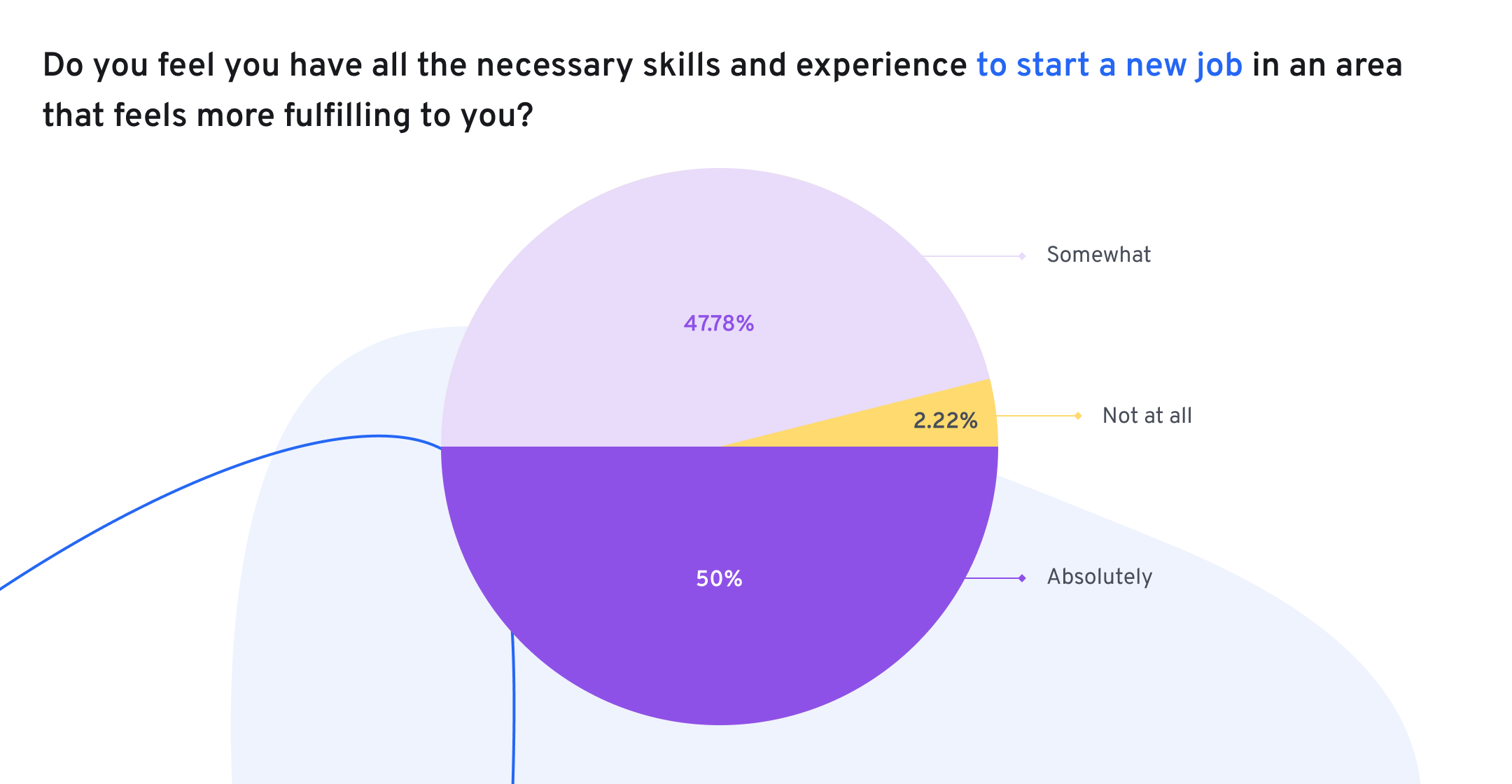
Onboarding, manager and leadership training, remote-friendly learning, professional development opportunities…all of these issues and more are significantly affecting workers during this new, “Great Rethinking” of our relationship with work. Right now, L&D teams, hand in hand with their HR colleagues and leadership teams, are the ones that can improve that relationship, for the benefit of employees and employers alike.
You can dive in to the results of our research in the chapters on the left. First up? We explore the kind of fulfilling work employees are demanding—and how Learning and Development teams can empower them to find it.
